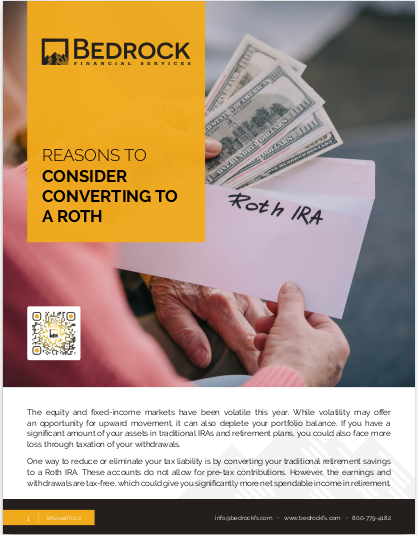Key Takeaways
-
If you’re still writing email sequences like it’s 2015, you’re losing attention fast. The modern inbox demands brevity, relevance, and rhythm.
-
Email sequences work best when each message feels like a conversation, not a campaign. The secret isn’t more emails—it’s the right message at the right time.
Why Most Financial Emails Go Unread
Every financial professional knows the pain of low open rates and ghosted follow-ups. It’s not that clients don’t care about what you offer. It’s that the average inbox is a battlefield, and most emails are just noise.
What makes it worse in 2025? Clients now scan more, read less, and bounce off walls of text within seconds. Even warm leads become cold if your messages feel like generic templates. You’re not just competing with other advisors. You’re competing with every other email your client gets in a day.
If your emails feel automated, salesy, or irrelevant, your reader is gone in under three seconds.
The Psychology of Email Engagement in 2025
To win attention now, you must understand one key reality: email is no longer the destination. It’s the invitation.
Your emails should lead clients to do something specific:
-
Click to confirm a meeting
-
Reply with a question
-
View a one-minute video
-
Choose between two short options
Clients will act when they don’t feel cornered. The goal of every message should be to remove friction. That means plain language, visual breaks, and messages that feel like they were written just for them.
People engage when they see value in under 10 seconds. This doesn’t mean being gimmicky—it means being human.
How to Structure Sequences That Actually Work
In 2025, a successful email sequence is less about the number of emails and more about intentionality. Here’s how to build one that gets results.
1. Start With One Goal Per Sequence
Don’t try to do too much. Your sequence should have one clear purpose:
-
Set a first appointment
-
Re-engage cold leads
-
Educate about a specific service
-
Onboard a new client
When each email builds toward the same goal, you create momentum. If you try to cross-sell, educate, and book appointments in the same sequence, you create confusion instead.
2. Keep It Short—Really Short
-
Subject line: under 45 characters
-
Email body: 3-5 short lines
-
Reading time: under 20 seconds
Every email should feel like a nudge, not a pitch. Use line spacing generously. Make your call-to-action easy to spot and even easier to follow.
3. Use a 5-Day Sequence (for Warm Leads)
Here’s a structure you can use right now:
-
Day 1: Friendly intro, connect message, low-commitment ask (“Would love to hear what matters most to you this year.”)
-
Day 2: Value email—short insight or FAQ answer
-
Day 3: Soft call-to-action, such as checking out a quick PDF or video
-
Day 4: Reminder with a personal angle (“Thought of you when I saw this…”)
-
Day 5: Direct call-to-action with time sensitivity (“I have a few 20-minute slots this week—interested?”)
You can space this out across 1-2 weeks if your audience prefers a slower pace.
Subject Lines That Don’t Get Ignored
Your subject line is the real opening line. In 2025, successful subject lines follow one of three patterns:
-
Curiosity-driven: “What most clients miss about retirement planning”
-
Relevance-driven: “Quick note before our Thursday call”
-
Personal-driven: “Ali, here’s something I thought you’d like”
Avoid anything that sounds like a promotion or a newsletter. Even if it is one, make it feel like a one-on-one message.
The Role of Visuals and Layout
People don’t read. They skim. So your layout matters.
-
Use bullet points to break down value
-
Use bolding to highlight key takeaways
-
Add whitespace to reduce fatigue
-
Insert a small image or icon if it makes the point faster
Your email should look good on mobile first. That’s where over 70% of your clients read their emails in 2025.
When to Automate and When to Send Manually
Automation saves time. But you should still feel present in your client’s inbox.
Automate:
-
Drip sequences for lead nurturing
-
Appointment reminders
-
Annual check-in prompts
Send manually:
-
Personal follow-ups
-
Custom advice or insights
-
Mid-process updates
Even in automation, add custom fields like first names, recent topics, or specific financial goals. When done right, automation feels personal. When done wrong, it reads like spam.
When to Email and When to Text Instead
Some clients will never read emails. You should know who they are.
In 2025, hybrid communication is expected. So use email for what it’s best at:
-
Detailed updates
-
Educational content
-
Compliance-heavy messaging
Use text when:
-
Confirming appointments
-
Sharing quick updates
-
Nudging silent leads
If someone replies to a text faster than email, don’t force them back to email. Meet them where they are. But always document important conversations in writing.
Avoiding Compliance Pitfalls
As a financial professional, you already know the risks. But email sequences carry some easy-to-overlook traps:
-
Don’t promise guaranteed outcomes
-
Don’t use testimonials without proper disclosures
-
Keep records of all automated sequences
-
Review your sequences at least every 6 months for changes in compliance laws
Also, unsubscribe links aren’t optional. They’re required. But make it a soft opt-out: “If you’d rather not hear from me this way, click here.”
When Clients Actually Want Your Emails
The biggest myth in email marketing is that clients don’t want more email. In truth, they just don’t want bad email.
They want messages that:
-
Respect their time
-
Feel timely and relevant
-
Help them make decisions easier
If your emails show up only when you’re selling something, clients will tune you out. But if they associate your emails with clarity, simplicity, or even relief, they’ll look forward to them.
Send fewer emails if you must—but make every one of them count.
Timing, Frequency, and Cadence
Your timing can be as important as your message.
-
Best days to send: Tuesday to Thursday
-
Best times: 9-11 AM or 2-3 PM (recipient’s local time)
-
Follow-up window: Within 48 hours of initial contact
For longer sequences, avoid emailing more than 2-3 times a week unless the client expects it.
And after a lead goes cold, don’t jump back in with a pitch. Instead, send a “check-in” email that offers something of value or opens with a question.
Your Sequences Should Feel Like You
Ultimately, the best emails don’t feel like they came from a system. They feel like they came from you.
-
Write how you speak
-
Share what you believe
-
Respect the reader’s attention
If your emails sound like a person they know, they’re more likely to respond like one.
In a world of AI-generated content, your human tone is your advantage. Clients can tell when something is written just for them. So let your voice come through.
Make Your Inbox a Place Clients Trust
Email is still one of your strongest communication tools in 2025. But it only works when it reflects how you serve.
Write to serve, not to sell. Sequence to guide, not to close.
And remember: a good email is just the start of a great conversation.
Want Your Emails to Actually Build Trust?
If you’re tired of email tools that don’t match how you work, or lead systems that feel pushy instead of helpful, we can help.
At Bedrock Financial Services, we support professionals like you with tools and training that make outreach feel natural, not forced. We help you design client journeys that reflect who you really are—not who an email software wants you to be.
Sign up today and let’s help you build emails that lead to lasting client relationships.







